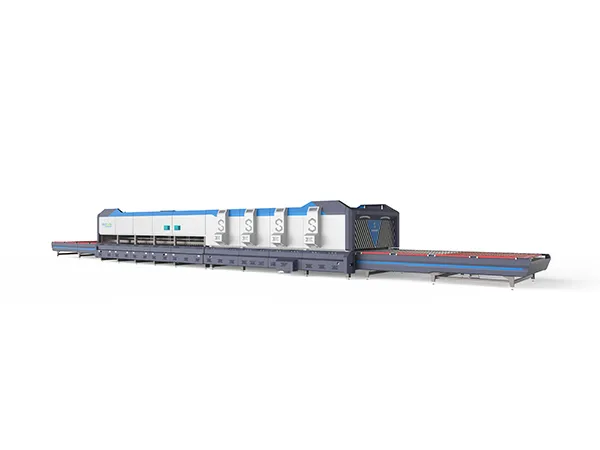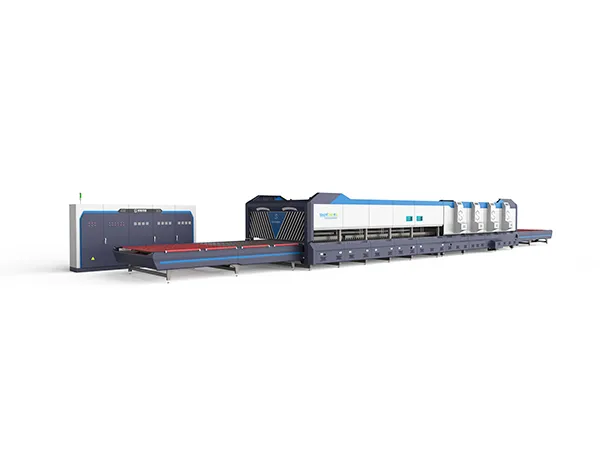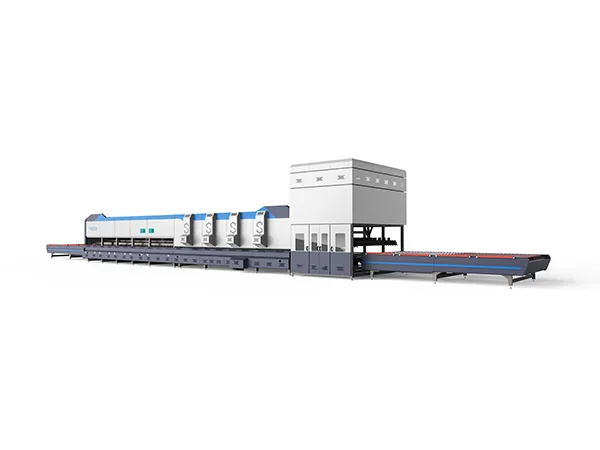Maintaining for a glass tempering furnace properly is crucial for extending its service life and ensuring the quality of the tempered glass produced. Here are some key maintenance steps for a glass tempering furnace:
Glass tempering furnace maintenance

Daily Cleaning and Inspection:
Start each day by thoroughly cleaning the furnace, especially critical parts like the ceramic rollers, heating elements, and air grilles.
Use soft cloths and non-corrosive cleaners to remove dust and debris.
Check for signs of damage or wear on all components and record any abnormalities.
Regular Lubrication and Adjustment:
Follow the manufacturer's guidelines to regularly lubricate bearings, gears, and other moving parts.
Correct lubrication not only reduces wear and tear but also prevents failures due to insufficient lubrication.
Periodically adjust the equipment to ensure proper alignment and balance of all parts to prevent unnecessary stress and damage.
Heating System Maintenance:
Regularly inspect heating elements such as heating wires and thermocouples to ensure they are functioning correctly.
Replace any damaged or aged heating elements promptly to maintain even temperature inside the furnace and precise control.
Clean the burners and flues regularly to prevent carbon buildup and blockages, ensuring heating efficiency.
Cooling System Inspection and Maintenance:
Check the operation of cooling fans and water pumps regularly to ensure unobstructed flow of coolant.
Clean cooling channels to remove scale and other deposits, maintaining cooling efficiency.
In cold seasons, take precautions to prevent the cooling system from freezing and consider insulation if necessary.

Electrical System Maintenance:
Regularly inspect wires, plugs, and sockets for wear or corrosion.
For control systems, perform regular software updates and functionality tests to ensure accurate operation.
Check the grounding system regularly to ensure electrical safety.
Emergency Fault Handling and Prevention:
Develop detailed emergency response plans for potential failures.
Classify possible malfunctions and prepare corresponding solutions for each scenario.
Regular inspections and maintenance can help prevent emergencies. In case of an emergency, activate the response plan and notify professional maintenance personnel immediately.
Maintenance Records and Analysis:
Keep a detailed record system of all maintenance activities, including measures taken, parts replaced, and issues found.
Analyzing this data can help identify trends in potential problems, allowing for timely adjustments to maintenance strategies and optimization of maintenance plans.
Training and Education:
Provide adequate training and education for operators to ensure they understand the working principles of the tempering furnace and master the correct operation and maintenance methods.
Regular training and assessment improve the professional level of operators, reduce operational errors, and enhance the stability and safety of equipment operation.
Temperature Reduction Methods:
There are three main cooling methods for tempering furnaces: natural cooling, emergency cooling, and furnace cleaning cooling.
Natural cooling is suitable for extended production halts and may take about two days for the temperature to decrease naturally.
Emergency and furnace cleaning cooling are used to rapidly reduce the furnace temperature, often employed in the event of adhesion or explosion incidents.

Maintenance of the Main Drive Mechanism:
Understand the composition of the main drive mechanism, which typically includes motors, reducers, chains, and drive shafts.
Check the oil level in the reducer regularly, ensuring it's at the midpoint of the oil window.
Adjust the tension of the main drive chain regularly to prevent slippage or excessive wear.
Monitor the operation of the main drive motor, checking for abnormal temperatures, sounds, or vibrations.
Clean and maintain the ceramic rollers regularly to prevent scratches or other quality issues with the glass.
Regularly check and lubricate bearings with lithium grease, with ceramic roller bearings being lubricated semi-annually and others annually.
By implementing these maintenance and care measures, you can maximize the production potential of the glass tempering furnace, extend its service life, and ensure the continuity of production and the high quality of the products.










